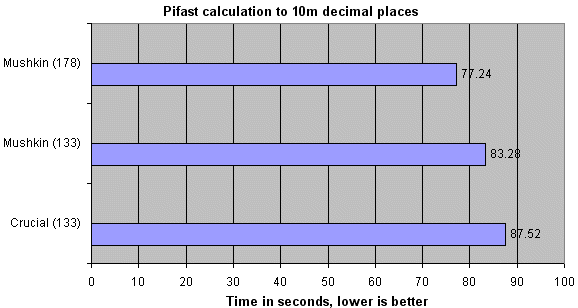Benchmarks I
Starting off with SiSoft SANDRA's buffered benchmark, do RAM timings and speeds make an awful lot of difference ?.

The difference in timings at 133MHz do not really present themselves in hugely elevated scores. Remember, we're running the Mushkin memory with 2-5-2-2 timings at 133MHz and the Crucial at 2.5-6-3-3. The Mushkin, when run at 178MHz with 2-5-2-3 timings, pulls out a huge lead in the buffered benchmark.
How about if we were to turn off all the buffering aids within SANDRA ?. Data isn't always prefetched and streamed efficiently through the memory bus. By disabling prefetching, we put the onus on the memory controller. We should see some interesting results.

With prefetching and streaming effectively disabled, we see memory timings do make a meaningful difference in this benchmark. In simple terms, the ability for the RAM to get a request out is enhanced by stricter timings. Due to the unbuffered nature, we aren't even close to peaking at the theoretical limit of the memory bus.
So, timings can make a difference to the turnaround of a request. How does this translate into meaningful performance gains in real-world applications. Let's find out by running Pifast. Pifast simply calculates the constant Pi to a set number of decimal places. Efficient memory bandwidth allied to pure CPU speed are paramount here. You can download it yourself here, simply unzip and run the .bat file, and wait for the results to be appended to the text file.

The initial 4-second gain at 133MHz is due to timings alone. Having RAM guaranteed to certain timings can, and often does, improve basic performance. Running faster system memory allows for more data to be sifted on every clock cycle. All in all, with the CPU being held to a constant 2800MHz, running standard Crucial memory at 133MHz (2.5-6-3-3) to running Mushkin at 178MHz (2-5-2-3), gives us a 10-second decrease in calculation times. Quite staggering, really.









